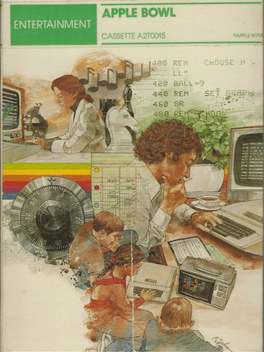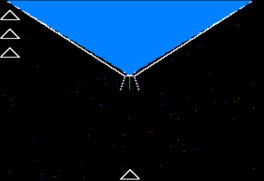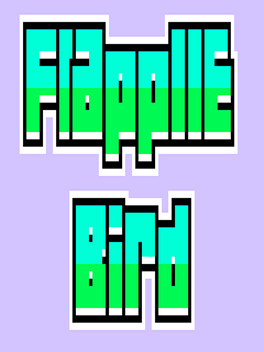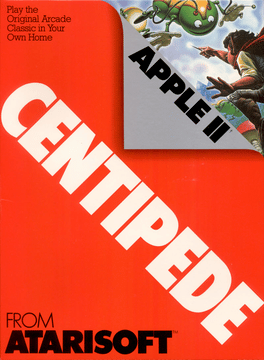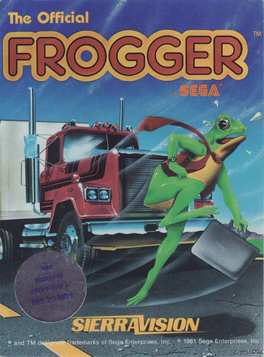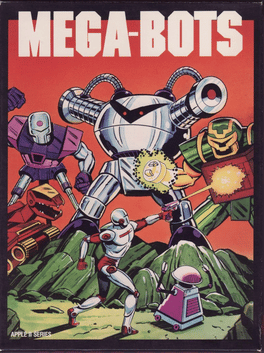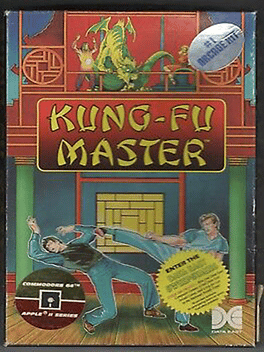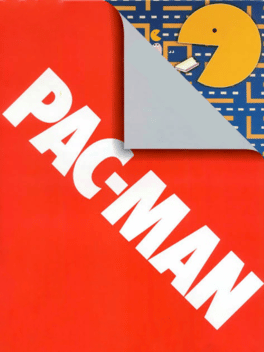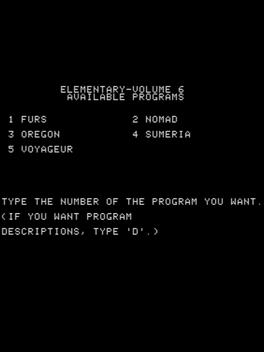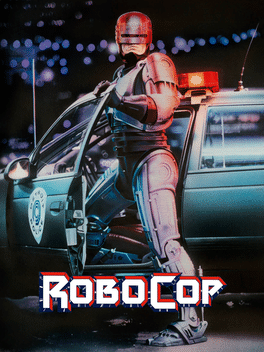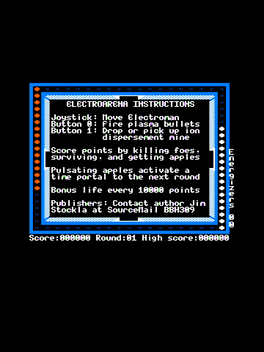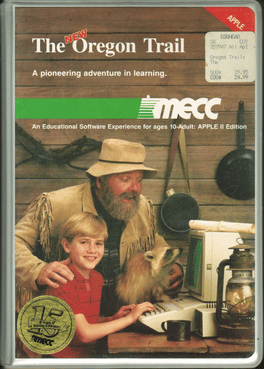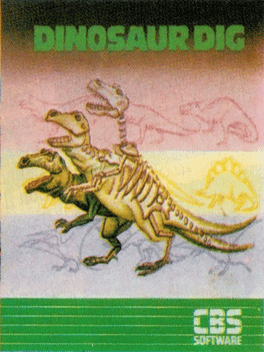Most Popular Apple Ii Games - Page 7
-
Wraith
1990
Wraith
1990
Wraith is a fantasy role-playing game like the author's previous effort Shadowforge, although it's set in a larger, more detailed world with an updated and expanded rule system. The worship of Metiria is being subverted all over the realm of Araithia; lords and commoners have turned their devotion to a newly-arrived evil power, the Wraith, whose monstrous armies now infest the island. You, guardian of the last Temple of the True Faith, are summoned to seek out and eliminate this evil. -
Apple Bowl
1979
Apple Bowl
1979
Apple Bowl is a 1-player bowling game for the Apple II. Played from a 1st person perspective at a bowling alley, the player bowls in lane, while occasionally another member at the bowling alley will bowl in lanes. A throw indicator scrolls slowly along the bottom of the screen, and the player starts their bowl when the ball is in their preferred position. The player controls the power and spin of the ball using the game paddles, and the game attempts to accurately simulate the physics of bowling. Follows standard 10-pin bowling rules with a total of 10 frames of bowling. -
Dodge 'Em
1982
-
Flapple Bird
2014
Flapple Bird
2014
Flapple Bird is a 1-player arcade game for the Apple II. Designed as an Apple II variant of Flappy Bird, the player controls a small bird that flaps its wings when the player taps a button, rises, and then shortly thereafter loses altitude. The player must guide their bird through a series of breaks in tubes, gaining one point for every tube successfully navigated. It's game over if the player hits a barricade, with goal to maximize score. -
Dig Dug
1984
Dig Dug
1984
Dig Dug is a 1-2 player arcade game in which you have to use your shovel to dig your way through the earth. Stopping you from doing this are two monsters, called Pooka and Fygar, who will continually chase you around. The only weapon that you carry is an air pump, which you can use to inflate the monsters to the point where they explode. (if you start to inflate them but stop doing so, the monsters will get turned back to their normal selves). Furthermore, rocks are scattered throughout the earth, and you can use these rocks to squash them. If the monsters do not find you for several seconds, they will eventually get turned into ghosts, which can walk through the earth. They are invincible and cannot be killed. From time to time, vegetables will appear in the center, and you can get these for points. -
Centipede
1983
-
Frogger
1983
-
Mega-Bots
1986
Mega-Bots
1986
Megabots is a futuristic strategy game that utilizes 3D graphics, animation, music and sound effects. The game begins with an introduction to set the scene before the player enters a grid filled with robots that might be good or bad. The objective to find a power cell within the grid to move on to the next level. Good robots can be interrogated for information. Bad robots must be destroyed with the right weapon before you can move past them. The strategy element comes from choosing the right weapons for the bad robots, and navigating the grid based on the information received to find the power cell before the player's own power reserve is depleted. -
Kung-Fu Master
1985
Kung-Fu Master
1985
Loosely based on a movie, Kung-Fu Master is a side scrolling action game for one or two players, who alternate turns. -
Pac-Man
1983
-
Oregon
1980
Oregon
1980
After MECC began collecting the Apple II versions of its various timeshare programs, including Oregon and many others, they instituted a new method for distributing the Apple II versions of its software to Minnesota schools – by assembling collections of the programs on floppy disks. One of the first releases in 1980 was Elementary Volume 6, containing five social studies simulation games, one of which was OREGON. Elementary Volume 6 soon became MECC’s most popular product for the Apple II. The 1980 version of Oregon was a much simpler game than the 1985 version, lacking many of the features that people now associate with the game. The 1980 version is very similar to the original text-only version that people played on teletype machines in the 1970s. The main feature that distinguishes the 1980 version from its text-only predecessors is that the shooting activities include simple graphics. There is also a crude map available to indicate your progress -
Paranoiak
1984
-
RoboCop
1988
-
Electroarena
1984
Electroarena
1984
A game similar to Robotron 2084 and Smash T.V.. Kill different enemies, and be aware of bombs. -
Mario Bros.
Mario Bros. is the Apple II port of the homonymous arcade game. It was never released. -
The Oregon Trail
1985
The Oregon Trail
1985
The famous and iconic 1980s graphical version of the game where settlers travel west, featuring dysentery, river crossings, and an entire family of characters. -
Rocket Factory
1992
Rocket Factory
1992
The player has the ability to create a rocket by defining the nose, fins, payload, and engine of their rocket. They can even create a custom paint job. The rocket can then be launched to determine its maximum altitude. There is also an option called Cloud Chaser, where the player is given a desired height for their rocket's trajectory, and they must try to create a rocket that meets this requirement. Bonus points are awarded based upon the payload attached. -
Dragon Blaster
1983
Dragon Blaster
1983
The player controls a small character, which can move horizontally on the bottom of the screen and fire vertically. In the background, an animated castle, dragon, and house can be seen. On each stage, a man on horseback, an alligator, and 4 birds which scroll horizontally across the screen appear. These creatures fire upon the player, and the player must avoid incoming shots. If the player shoots all four creatures, the player advances to the next stage, which is identical to the previous. The player has a total of 3 lives, and when all are list, it's game over. -
Dinosaur Dig
1984
Dinosaur Dig
1984
Dinosaur Dig it's an educational game about dinosaurs developed by CBS Software for Apple II.

